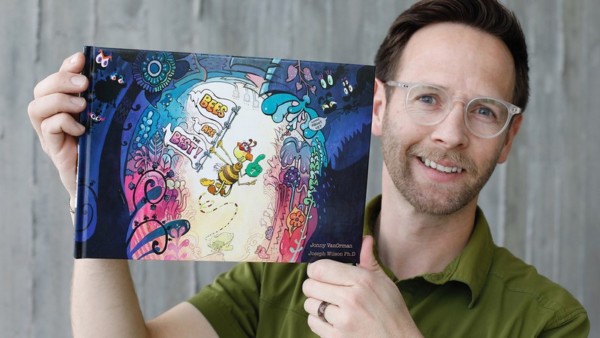Don't Touch My Hive! Honey Bees and Killer Hornets with Dr. Joe Wilson
 During your quarantined google searching, the infiltration of the Asian Giant Hornets ‘Murder Hornets’ into the U.S may have come across your screen. But are they really a threat? Dr. Joe Wilson, one of USU’s evolutionary biologists, calms our nerves (especially for us in Utah) and gives us a look into the lives of these wasps, along with honeybees’ domestication and ‘endangerment’.
During your quarantined google searching, the infiltration of the Asian Giant Hornets ‘Murder Hornets’ into the U.S may have come across your screen. But are they really a threat? Dr. Joe Wilson, one of USU’s evolutionary biologists, calms our nerves (especially for us in Utah) and gives us a look into the lives of these wasps, along with honeybees’ domestication and ‘endangerment’.
Hornets are predators. They look for animal protein and will hunt down caterpillars and other soft-body insects like a lion hunts a gazelle. They also act as scavengers, which may explain why you might spot them when during a picnic outing. The Giant Asian Hornets are no different. These hornets are also good pest controllers, but still predatorial, social insects that will “defend their hive if they feel threatened” Wilson states. Last Fall, the first report of a live nest in North America was found in British Columbia. Officials destroyed the hive but despite efforts to eradicate these insects, in October a single-dead hornet was discovered. Since then there has been sightings in Washington State. Big concerns about these hornets are the dangers they bring to beehives. 50 Giant Asian Hornets can kill 50,000 honeybees in a matter of hours, posing another threat for beekeeper’s hives.
Bee-sides Wasp talk, Wyatt and Wilson talk about the ‘extinction of Honeybees’. Wilson assures us that they are not going extinct, but “face a lot of threat as a semi-domesticated animal”. Using bees to pollinate our fruit and produce honey for our store, humans have “artificially changed their behaviors, putting them on a truck to put them in the middle of an orchard. then put them back on a truck and moving them to another place for the next season”. Humans have also created artificial space for bees, whether through home “bee hotels” and beehive boxes, increasing the number of honeybees in an area. This density of bees in one area increases transmission rates of disease and pests into the population.


